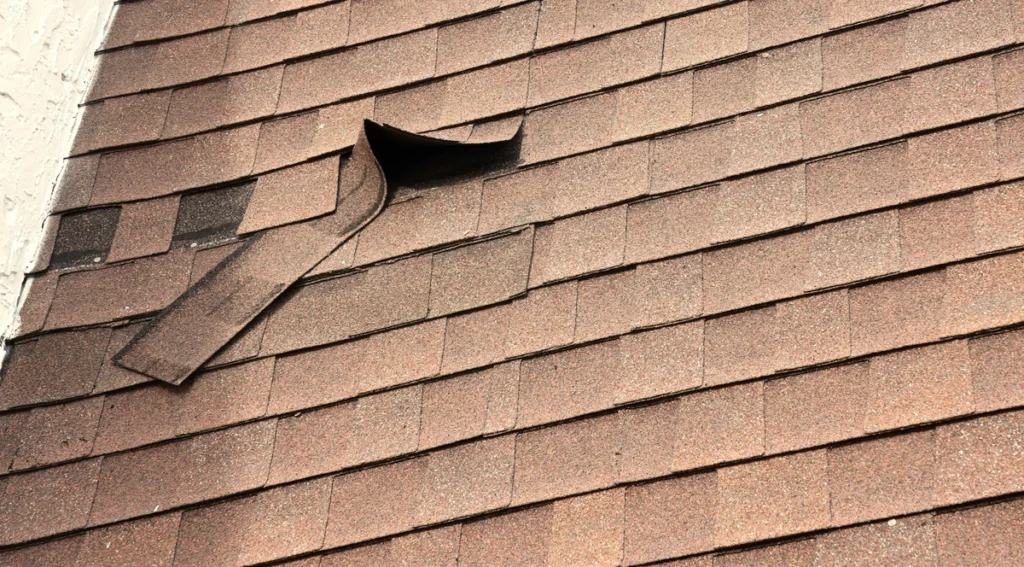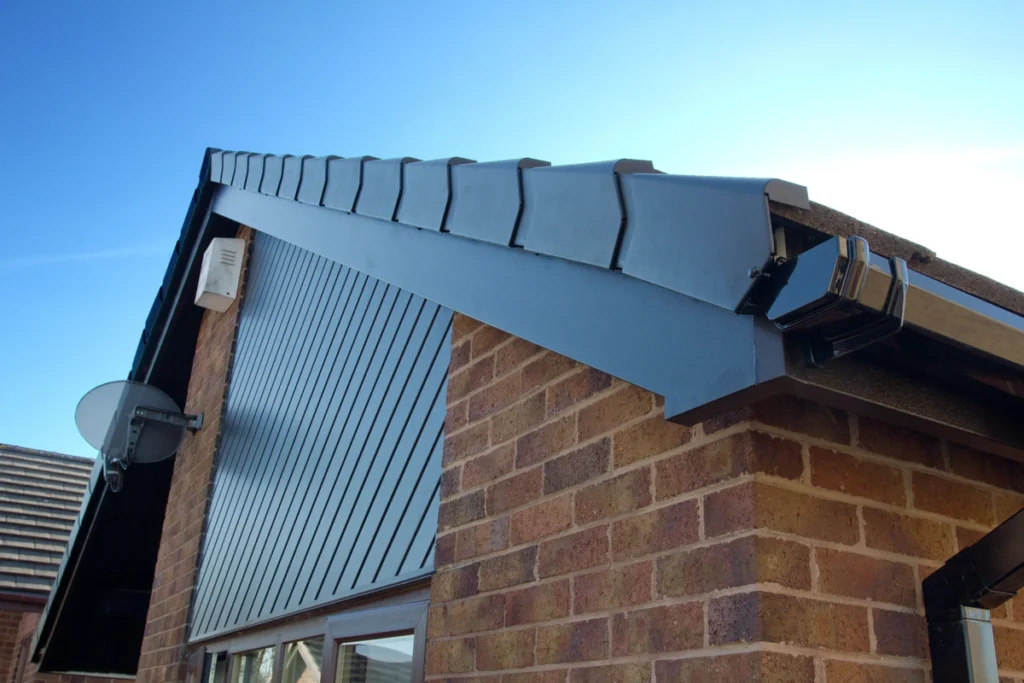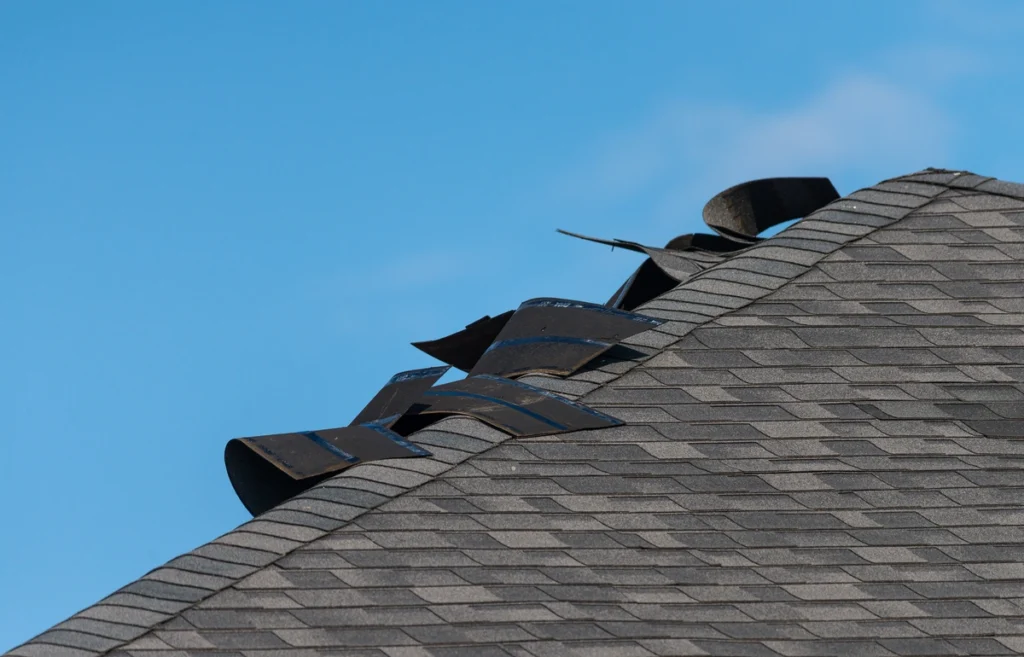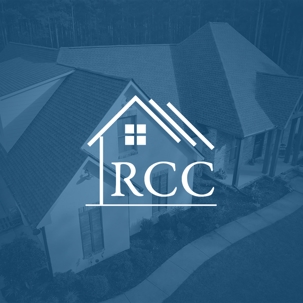Have you recently experienced a major storm or high winds in your neighborhood and find yourself questioning the structural integrity of your roof? Roof wind damage is more common than many homeowners realize, and it can cause serious issues if not promptly addressed.
This blog post will guide you through recognizing the most common visual signs of wind-induced roof damage. From missing shingles to interior water leaks, we’ll cover all the potential red flags that might indicate your roof has taken some hard high-speed hits.
Rectifying damage will likely require the help of a professional roofer, like us here at Rankin County Custom. We want to arm homeowners with the knowledge required to identify structural damage, so we can respond immediately to help them fix it – with our team of GAF Master Elite Certified roofers.
Signs of Wind Damage to Your Roof

Strong winds can cause several signs of roof damage, including loose or missing shingles, curling or peeling shingles, granule loss, damaged soffit or fascia, and indoor leaks from water damage.
Let’s further identify the most common signs:
Loose or Missing Shingles
Roof wind damage most commonly results in missing shingles. High winds and severe weather can often leave tell-tale signs of structural damage to your roof, with one of the most common being loose, stripped, or missing shingles.
Shingle displacement typically occurs because strong wind gusts get underneath them, creating an upward pulling force that their adhesive cannot withstand. Usually, you only see this at higher wind speeds, but it can also happen in cases of poor installation. This pressure leads to loosened nails and eventually kicks off entire pieces from the roof.
Fallen trees, askew tree branches or other flying debris can also result in damage that requires more extensive roof repairs.
This particular type of roof damage may seem minor at first glance since your entire roof remains intact, but ignoring such issues could permit water leakage during the next rainfall causing damp rafters and other structural problems over time.
Curling or Peeling Shingles
Curling shingles or peeling shingles often suggest that your roof has sustained damage from high winds.
Wind speeds during strong storms have the capacity to lift and peel back even well-secured asphalt shingles. The wind catches under any slight gaps or loose areas, eventually leading to curling at stress points in the roofing material.
Once curled, these sections are far more susceptible to further damage from subsequent weather events like heavy rains and snowfalls, causing leaks and structural damage inside your house.
Noticing an unusual dampness in your rafters after several days of windy conditions could indicate that water leakage had occurred due to wind damaged roof areas where curling shingles or peeling has taken place.
Granule Loss
Granule loss signifies one of the undeniable signs of wind damage on your roof. These granules serve as a protective layer for asphalt shingles, shielding them from harmful UV rays and increasing their lifespan.
These tiny particles often find their way into gutters following high wind bursts or damaging storms. While some amount of granule shedding is considered normal — particularly in newer roofs where loose grains may still be present post-installation — storm-induced loss typically presents in noticeable horizontal lines across the affected area.
Notably, any suspect damage to your roof should prompt an insurance claim with your homeowners insurance company who will likely require pictures illustrating this kind of specific wind-induced roof impairment for validation purposes.
Damaged Soffit or Fascia

One of the signs that your roof has sustained wind damage is a damaged soffit or fascia. The soffit refers to the underside of your roof’s overhang, while the fascia is the vertical board that caps off the ends of your rafters.
Both the fascia and soffit play a crucial role in protecting your home from water damage. They help keep water from entering the roofing system by directing it away from vulnerable areas like eaves and rafter tails.
It’s important to note that other roofing materials like gutters, flashing, and roofing materials can also suffer from wind damage.
To see if your soffit or fascia has been affected by high winds, look for visible cracks, bending or warping, or any missing sections during a visual inspection.
Indoor Leaks or Signs of Water Damage
If your roof has sustained wind damage, one of the most common signs you may notice indoors is leaks or other internal signs of water damage. Water spots on your ceiling are an early indicator of a roof leak that could be associated with wind damage.
These visible leaks that penetrate through to the ceiling are often a direct result of shingles being blown off or damaged during high winds.
You might also see chipped or peeling paint, water stains, and softened areas on your ceilings or attic floor, which could indicate leaky roof damage or other water-related issues caused by wind damage.
How to Identify Wind Damage From Pictures
To identify wind damage from pictures, look for flapping or missing shingles, dents in the shingles or siding, and other obvious signs of damage caused by strong winds.
Flapping or Missing Shingles
One of the most obvious signs that your roof has sustained wind damage is flapping or missing shingles. When high winds hit, they can cause shingles to become loose and blow off entirely.
Flapping or missing shingles not only compromise the overall appearance of your roof but also leave it vulnerable to leaks and further damage.
Dents in Shingles or Siding
Dents in shingles or siding can be an easy-to-spot indicator that your roof has sustained wind damage. When strong winds blow, they can grip the shingles and cause them to crack, leading to exposure and tears.
These cracks create weak points where water can seep under the shingles and compromise the integrity of your roof. If you notice indentations or depressions on your roofing materials after a storm with high winds, it’s important to take action promptly.
To prevent any potential leaks or structural damage, consult with a professional roofing contractor who can conduct thorough inspection.
The Importance of Addressing Wind Damage to Your Roof

Addressing wind damage to your roof is crucial for the overall safety and integrity of your home. Ignoring or delaying repairs can lead to further damage, potentially causing leaks, structural issues, and even compromising the safety of your loved ones.
By promptly addressing wind damage, you can prevent additional problems down the line. Your homeowners insurance policy may cover a portion of structural roof damage due to storms. Timely roof repairs can help to maintain a watertight seal on your roof and protect against potential water leaks – and bigger financial expenses.
We always recommend our free same-day evaluations, so you can assess the extent of the damage and file insurance claims within the appropriate time frame.
Remember that even minor wind damage should not be overlooked. Roof repair is essential. A roof inspection from a professional company like Rankin County Custom can help you determine the extent of any damage and ensure repairs are done properly – to withstand high winds and prevent storm damage.
What may seem like a small issue now could easily escalate into significant problems later on if left unaddressed. Don’t hesitate to contact us today!

